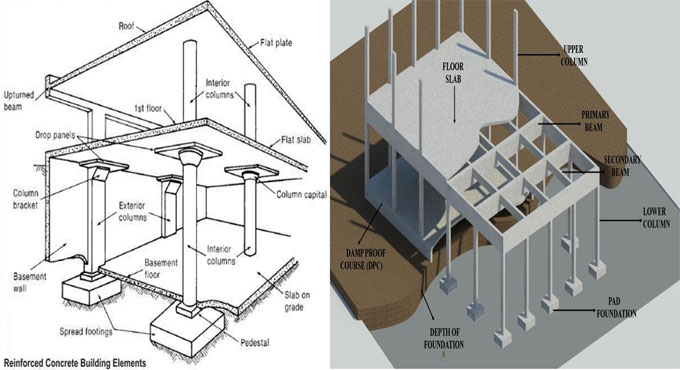1st Floor: It belongs to the floor that contains 1 storey height over ground.
Basement Floor: The floor that is located at basement of the building. It is also known as cellar. The basement floor is situated either entirely or partly underneath the ground floor. A basement is utilized closely in the similar way like a supplementary above-ground floor of a house or other building.
The application of basements mainly based on several factors associated with a specific geographical area like climate, soil, seismic activity, building technology, and real estate economics.
The concrete floor in most basements is not included in the foundation structurally except the basement walls. With the surge of warm air, basements are normally cooler compared with the remaining part of the house. In summer, it makes basements damp, because of the greater relative humidity.
Basement Wall: The wall that encircles the basement floor is known as the basement wall and it considered as a vital portion of the foundation structurally. The basement walls stands for shear walls which have the ability to withstand the lateral loads also. Besides, these walls are considered as highly non-porous and water-defiant.
Column Bracket: Column Bracket is over hanged from the column and it is useful for hanging or affixing lamps, bulbs or other accessories to it similar to road signs.
Column Capital: Column capital belongs to an architectural element that is utilized for aesthetic purposes to develop the uppermost member of a column.
Drop Panels: The objective of drop panels is to solidify the slab around the column in flat slabs to get rid of punching shear. As flat slabs do not contain stirrups, shear is defended by solidifying the slab around the column to raise the concrete in shear. Beams are also applied, but normally drop panels are most effective to get rid of conflicts with the electro-mechanical works of the structure.
Exterior Columns: These are the columns which provide support to the primary structure of the building. Normally in frame structures, the exterior columns are very crucial and sustain the load of the building as well as withstand environmental factors like wind, rain, and other physical factors.
Flat Plate: These are the slabs to be attached with the columns directly. Flat plate system is mostly recognized by the engineers as it offers huge benefits. The system can curtail the height of the building, offer more flexible spatial planning as there are no beams. It also minimizes the material cost significantly. But the issue is that it can be easily broken and may collapse against punching shear. Because of the comparatively small floor loading and the tight column spacing, flat plate construction is getting popular.
To combat greater loading and larger column spacing, column capitals are necessary, and for even bigger spans to decrease the self-weight, waffle slabs are required.
To get more information, go through the following article www.aboutcivil.org

~~~~~~~~~~~~~~~~~~~~~~~~~
Published By
Rajib Dey
www.constructioncost.co
~~~~~~~~~~~~~~~~~~~~~~~~~
No comments:
Post a Comment